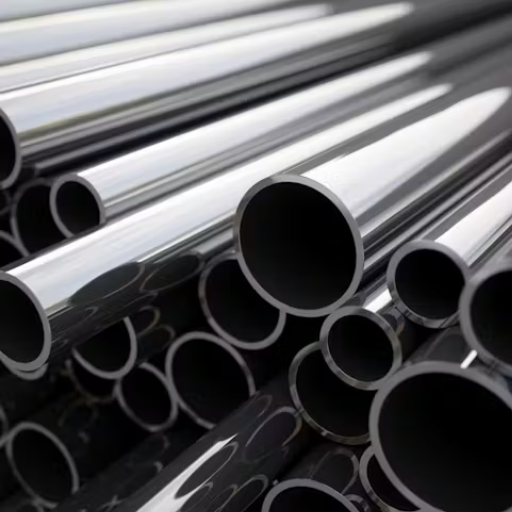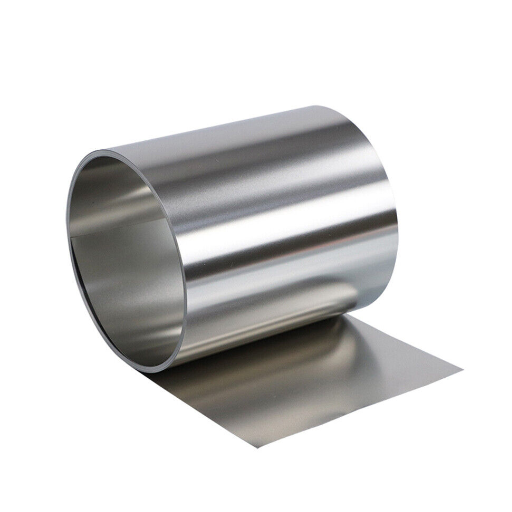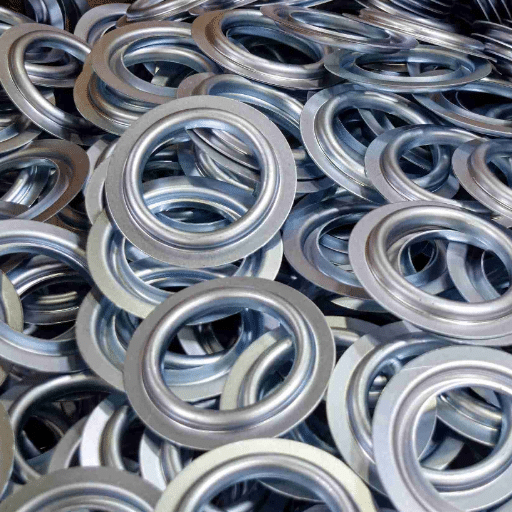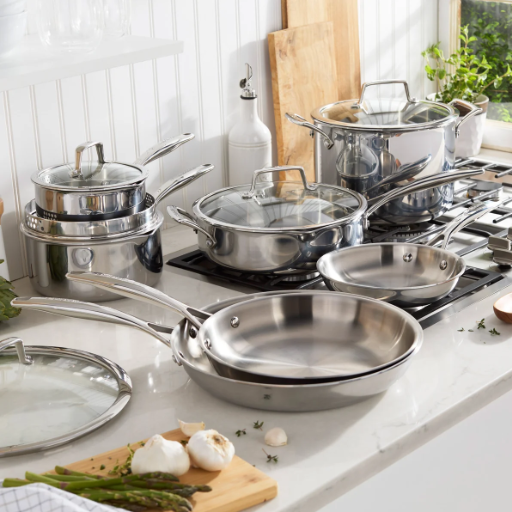T304 stainless steel round bars are among the most versatile and widely used materials in industrial and commercial applications. Known for their exceptional corrosion resistance, durability, and machinability, these bars have become a staple in industries ranging from construction to manufacturing. This guide provides a detailed overview of T304 stainless steel round bars, including their chemical composition, key properties, and real-world applications. Additionally, we will cover the benefits of using T304 in demanding environments, compare it with other stainless steel grades, and discuss crucial factors such as fabrication techniques and maintenance. By the end of this article, you will have a comprehensive understanding of why T304 stainless steel round bars are a vital component in various engineering and industrial projects.
What are the Mechanical Properties of the T304 Stainless Steel Round Bar?

For its remarkable mechanical characteristics, T304 stainless steel round bars are reputable. The material possesses a tensile strength of nearly 515 MPa (75,000 psi), and yield strength of nearly 205 MPa (30,000 psi), meaning it can endure a considerable amount of stress. T304 showcases significant ductility with an elongation at a break of 40% in tensile testing. Moderate hardness Brinell hardness lies between 201 to217, meaning it has average abrasion resistance. Additionally, this alloy has superb toughness even at low temperatures, and due to a high modulus of elasticity of approximately 193 GPa, it can resist deformation while under load. All of these attributes serve to increase the versatility and dependability of T304 stainless steel for use in engineering and industrial purposes.
Understanding the Tensile Strength of 304 Stainless Steel
Like all other forms of stainless steel, the 304 model possesses an ultimate tensile strength (UTS), indicative of the material’s ability to resist maximum amounts of tensile stress without failing. For this type of material, the approximate measurement of UTS is 515 MPa (75,000 psi). This amount gives a reasonable estimate of the attribute’s ability to stay intact under stretching or pulling forces. Its composition of chromium and nickel is useful for giving it strength without losing the ability to resist corrosion. Moreover, these features are particularly useful for structural integrity or load-bearing tasks. It should also be mentioned that cold working and some other processes can improve the tensile strength of 304 stainless steel even further, making it beneficial for various engineering and industrial purposes while still retaining formability and weldability.
The Role of Chromium and Nickel in Enhancing Corrosion Resistance
The corrosion resistance of 304 stainless steel fundamentally relies on Chromium and nickel. With nickel in the range of 8-10.5% and chromium in the range of 18-20%, additive nickel increases the steel’s stability under harsh environments while improving resistance to aggressive material, such as chlorine and acids. At the same time, improvement of the passive oxide layer surface by corrosion-resistant chromium is also taking place. The self-repairing layer significantly minimizes the ingress of moisture and chemicals, commonly referred to as corrosive agents. These elements also improve the durability of the steel against various temperatures and mechanical stress which is referred to as fatigue resistance. Because of these alloying elements, there is an increase in application of the steel for chemical processing and production, food processing and production, and marine activities. The resulting synergism not only reduces maintenance costs due to corrosion but also results in reliable performance at the same time increasing the service life.
How High Temperatures Affect 304 Stainless Steel
Applications involving moderate to elevated heat levels are supported by the considerable heat resistance 304 stainless steel exhibits. Nevertheless, when subjected to 800 F to 1500 F (427 C to 816 C) for prolonged periods, it could suffer from carbide precipitation. This is when carbon combines with chromium which results in the formation of chromium carbides at the grain boundaries. The chromium depletes the steel matrix and the passive protective oxide layer becomes the grain. This condition known as sensitization makes the stainless steel exposed to intergranular corrosion much more easily.
Balance has to be struck with the other great advantages 304 stainless steel possesses, in terms of oxidation resistance, it easily withstands up to 1600 F (870 C) for non-continuous service and 1700 F (927 C) for continuous service. The mechanical strength decreases when the temperature towards the upper end of the range is approached due to thermal expansion and structural changes within the alloy. For even greater temperature tolerant requirements above the ones stated, utilizing 304H or 310 stainless steel is recommended as they offer greater resistance to heat-induced deterioration. Utilization of 304 stainless steel at elevated temperatures would require adequate control in terms of environment and risk mitigation to ensure optimum performance of the steel.
How Does ASTM A276 Define 304 Stainless Steel Round Bars?

304 stainless steel round bars issued by ASTM A276 are classified as hot-finished or cold-finished bars which are used in structural and architectural fields. These bars are bound by a certain chemical makeup which includes chromium in the proportion of 18.0-20.0% and nickel in the proportion of 8.0-10.5%, both of which are known to possess great antioxidative attributes. In combination with these chemical constituents, there are mechanical properties defined such as the tensile strength set at a minimum of 515 MPA and yield strength measured at a minimal 205 MPA, both of which ensure it can withstand many different environments and conditions. For the sake of consistency and quality across a wide variety of uses, ASTM A276 outlines the specific limitations for measuring tolerances, surface finish, as well as other methods of processing.
Exploring the ASTM Standards for Round Bars
ASTM standards about round bars guarantee both stringent specifications and reliability across applications. One of the standards is ASTM A276, which oversees the composition, mechanical, and dimensional features of stainless steel bars, which include round bars. This standard addresses hot-finished and cold-finished bars for structural/ architectural/ engineering uses. Some of the parameters are limits on chemically active constituents like chromium and nickel to ensure that there is sufficient corrosion resistance and mechanical properties such as tensile strength (not less than 515 MPa) and yield strength (not less than 205 MPa). Furthermore, ASTM sets tolerance ranges for dimensional accuracy to promote compatibility and precision in manufacturing operations. Surface finishes and heat treatment also have supporting standards in place that enable the optimum quality of the product to be achieved for other different applications. These guidelines, as a whole, ensure the structural integrity and performance of round bars are maintained throughout difficult conditions of industry and environment.
What is the Specification for ASTM A276?
ASTM A276 sets forth a standard that includes a mechanical and chemical composition of a stainless steel bar, along with the required surface finish. The standard also incorporates hot-finished and cold-finished stainless steel bars excluding rebars. The included bars come in different profiles, which are rounds, squares, and hexagons. The specification sets a minimum mechanical property of the bars, including tensile strength which is typically ≥ 515 MPa, and yield strength which is typically ≥ 205 MPa. Chemical elements such as chromium (16.00–18.00%) and nickel (8.00–10.50%) are also set in the specification for corrosion resistance purposes. Moreover, the bars are set with the required tolerances, dimensional accuracy, and surface defects for manufactured engineering requirements. Structural, architectural, and some high-temperature performance or mechanical durable industries widely use ASTM A276.
Differences Between Hot Rolled and Cold Rolled Bars
The main distinction between hot-rolled and cold-rolled bars is the way they are fabricated. Hot rolled bars are created at high temperatures, exceeding the metals recrystallization zone such as 1700°F (927°C) for steel. This process enables effortless shaping of the material, while also relieving internal tensions. Hot rolled bars typically have a rough surface finish, imprecise measurements, and some surface blemishes from the cooling stage. Such bars are used mostly in projects that do not need fine tolerances and surface particulars, for example, construction, structural parts, and machinery manufacturing.
However, cold rolled bars are processed further at room temperature and undergo additional hot rolling. This includes outputting additional axial mechanical work through processes such as drawing, turning, or grinding to improve the bar’s strength, surface finish, and dimensional accuracy. Cold-rolled bars have a superior surface finish, surface accuracy, and mechanical properties when compared to cold-rolled bars. These bars find their best use in high-performance applications that have appealing surface appearance, increased strength, and high accuracy in measurements like in automobile parts, engineering tools, and domestic appliances.
Both processes result in bars that possess different mechanical and functional properties which feature the most utilized about the application’s demands.
Why Choose 304 Stainless Steel for Corrosive Environments?

Due to unprecedented resistance to oxidation and corrosion, 304 stainless steel is a highly sought-after material for use in tough conditions. Its substantial oxide layer prevents moisture, chemicals, and acidic or salty environments from decaying it. This makes stainless steel exceptional for construction purposes in marine areas, chemical processing machines, and food-grade machinery. On top of that, 304 stainless steel is easy to maintain and improves with time which makes it cost-effective in the long run. This helps further cement its reputation as a go-to material for harsh corrosive environments.
The Importance of Superior Corrosion Resistance
Due to the broad and multifaceted impacts of longevity, safety, and reliance on materials and structures, superior corrosion resistance is critical in many industries. For example, the use of 304 stainless steel which possesses high corrosion resistance greatly reduces the risks of structural weakening due to harsh conditions of moisture, acids, and salts. This significantly reduces the likelihood of equipment failure over time, reducing maintenance or replacement costs.
In addition, corrosion-resistant materials help uphold hygienic standards in food processing and pharmaceutical industries that are maintained through the absence of material degradation. Furthermore, these materials are essential in infrastructure and marine applications which need constant exposure to corrosive elements. In essence, the overall efficiency of operations, safety of products, and expenses are maximized by choosing materials with superior corrosion resistance.
Applications in Chemical Processing and Food Processing
Using corrosion-resistant materials is crucial in chemical processing to guarantee the safety and health of equipment in contact with highly reactive substances such as acids, gases, and solvents. The use of stainless steel 304 and 316 is very common because their resistance to chemical reactions is far superior, thus preventing equipment failures and contamination of chemical products. In return, this reliability improves operational efficiency whilst reducing downtime and maintenance costs.
As in chemical processing, food processing also requires materials with high strength in corrosion to ensure the utmost hygienic standards. Corroding acids, cleaning agents, and high humidity make stainless steel more and more desirable in the food industry. Its strength allows for the avoidance of cracks or degradation that harbor bacteria for the duration of the equipment’s life, ensuring the safety of the consumer and the quality of the product. In addition, corrosion-resistant materials are easy to maintain and meet other stringent regulations which makes them all the more important in these industries.
Differences Between 304 and 316 Stainless Steel in Harsh Environments
A distinctive aspect that separates stainless steel grades 304 and 316 is how well they both perform in harsh environments. The chrome-nickel composition of both grades allows for a high level of corrosion resistance, but the molybdenum in 316 stainless steel makes it more suitable for marine applications as well as contact with harsh chemicals due to its far superior resistance to chlorides and chemicals.
Said that grade 304 stainless steel works well when the worsening environment is industrial or chemical exposure is lower. But when the environment consists of saltwater the pitting resistance of 316 stainless steel prevents localized corrosion.
Although both grades exhibit similar tensile strength and durability, the increased cost of 316 stainless steel which is reflected due to more demanding applications, as well as its enhanced corroded resistance shows that from a mechanical perspective, it is better at withstanding harsher environments. Choosing the appropriate grade is vital to ensure the grade to maximize equipment longevity and maintains operational standards is met.
Where to Find Reliable Round Bar Manufacturers and Suppliers?

While looking for round bar suppliers, focus on manufacturers that have a history of providing quality materials. Look for certifications like ISO 9001 as these ensure that the company follows set quality standards. Furthermore, focus on manufacturers that deal with 304 and 316 stainless steel if your application requires specific grades for higher corrosion resistance and durability. Use customer feedback, industry citations, and company age to measure their reliability. Also, sites and trade catalogs such as Alibaba, Made-In-China, and ThomasNet are great for finding reputable suppliers. Pick suppliers who exceed expectations in offering project-specific customization, fast delivery, and affordable prices.
Top Suppliers of 304 Stainless Steel Round Bars in India
- Viraj Profiles Ltd
Viraj Profiles Ltd is one of the leading manufacturers of stainless steel long products, including 304 stainless steel round bars. With a strong global presence, they provide high-quality materials catering to various industries such as automotive, construction, and oil and gas. Their ISO-certified production process ensures consistency and adherence to international standards.
- Jindal Stainless
Jindal Stainless is a renowned name in India’s stainless steel industry, offering a wide range of products, including 304 stainless steel round bars. They are recognized for their robust supply chain, customized solutions, and adherence to stringent quality protocols. Their extensive distribution network allows them to deliver products across industries efficiently.
- Venus Wires
Venus Wires specializes in precision-engineered stainless steel products, including 304 round bars. They are well-known for their commitment to quality and innovation, supported by certifications such as ISO 9001 and an advanced manufacturing infrastructure. Their products meet the requirements of industries ranging from food processing to aerospace.
These suppliers are consistently rated highly for their material quality, customer service, and ability to cater to bespoke specifications.
Key Factors to Consider When Choosing a Round Bar Manufacturer
Selecting the right round bar manufacturer involves evaluating several critical factors to ensure both quality and reliability. Below are the essential considerations:
- Material Quality and Certifications
Assess the manufacturer’s adherence to industry standards as evidenced by certifications such as ISO 9001, ASTM, or other relevant quality benchmarks. High-grade raw materials, such as 304 or 316 stainless steel, are indicators of durability and performance across various environments.
- Manufacturing Capabilities and Infrastructure
A reliable manufacturer should have advanced production facilities, including precision machining and testing equipment. This ensures consistency in dimensions, surface finishing, and mechanical properties of the round bars.
- Customization and Range of Offerings
Evaluate the manufacturer’s ability to provide customized solutions, including specific sizes, grades, and finishes. Versatility in meeting diverse industry applications, such as construction, automotive, or aerospace, is a key differentiator.
- Supply Chain Efficiency
Timely delivery is critical for project efficiency. Investigate the manufacturer’s supply chain, logistics network, and production capacity to ensure they can meet your deadlines without compromising quality.
- Reputation and Client Feedback
Consider the manufacturer’s industry reputation and reliability. Reviews, case studies, and testimonials provide insights into customer service, problem-resolution capabilities, and overall satisfaction levels.
By rigorously evaluating these factors, companies can make informed decisions and partner with a manufacturer that aligns with their operational requirements and quality expectations.
What Are the Benefits of Using 304 Bright Bar and Half Round Bar?

Advantages of Employing 304 Bright Bar
The 304 Bright Bar is best suited for processing food and medical equipment because its bright finish aids in preventing surface contamination while enhancing aesthetic value. It’s very useful in construction frameworks, automotive parts, and other precision machined items due to its durability and high tensile strength. Additionally, 304 Bright Bar is very versatile, easy to fabricate, and supports welding without losing its mechanical qualities. Its exceptional resistance to corrosion serves well in the marine environment and in conditions having chemicals, moisture, and other damaging elements. The 304 Bright Bar’s lovely polish finish makes it suitable for food processing and medical equipment as well.
Advantages of Employing Half-Round Bar
Half Round Bars are very useful for architectural accents, decorative frameworks, and railings as they have a semi-circular cross-section that provides structural stability while lowering the overall mass. Ideal for various industries like construction, manufacturing, and heavy machinery, they guarantee high-level efficiency while minimizing material use. Half Round Bars also offer great ease in machining and maintenance, showcasing ideal dimensional and surface finish quality. The combination of strength, functionality, and unique geometry allows for its use in many different applications.
Advantages of 304 Bright Bar in Industrial Applications
304 Bright Bar, composed primarily of chromium and nickel, is a versatile stainless steel product known for its superior strength, durability, and corrosion resistance. Its properties make it a preferred choice in various industrial applications.
- Corrosion Resistance
The high chromium content in 304 Bright Bar provides excellent resistance to oxidation and corrosion, even in harsh environments such as marine or chemical-intensive industries. This makes it highly reliable for prolonged exposure to moisture and high temperatures, ensuring longevity and reduced maintenance costs.
- High Tensile Strength
304 Bright Bar offers exceptional tensile strength, enabling it to withstand heavy loads and mechanical stress. Its robustness makes it suitable for manufacturing components used in construction, automotive, and machinery where mechanical integrity is critical.
- Versatility and Machinability
The material is not only hardwearing but also easy to machine and fabricate. This adaptability allows it to be used across a wide range of applications, such as in the production of fasteners, shafts, and precision-engineered tools.
- Aesthetic Appearance
Its shiny and polished surface provides an aesthetically appealing finish, making it ideal for decorative and architectural uses without compromising on functionality.
- Cost-Efficiency
With its balanced properties and long lifespan, 304 Bright Bar offers a cost-effective solution for industries aiming to enhance operational efficiency while minimizing replacements and repairs.
These advantages demonstrate why 304 Bright Bar is a critical material across multiple industries, delivering consistent performance in demanding conditions.
When to Use Half-Round Bar for Your Projects
Being decorative and semi-circular in cross-section, half-round bars are extensively used in construction and industry. As an industrial blended material, they are popular in metalworking, architectural detailing, furniture edging, and railings. Their rounded geometrical profile coupled with strength gives these materials great versatility even in aesthetic applications.
Half-round bars excel in providing strength while serving rounded edge and smooth finish requirements. Whey being used as part of ornamental metal frameworks or as bracing and reinforcement for curved molds, they are quite easy to fabricate and resist distortion under load, making them quite innocuous in their constructions. While using half-round bars strength and performance depend on material selection such as steel, aluminum, or brass, and the project dimensions.
References
Frequently Asked Questions (FAQ)
Q: What are the main properties of stainless steel, specifically the T304 stainless steel round bar?
A: T304 stainless steel round bar is an austenitic stainless steel known for its excellent corrosion resistance, high tensile strength, and versatility. It is highly resistant to oxidation, and its properties make it suitable for various applications, including food and beverage industry use.
Q: How does the T304 stainless steel round bar compare to 304L stainless steel?
A: While both T304 and 304L stainless steel are austenitic stainless steels, 304L has a lower carbon content, which provides better weldability and reduces the risk of carbide precipitation during welding. This makes 304L ideal for applications requiring extensive welding.
Q: What are the benefits of using a T304 stainless steel round bar in fabrication?
A: T304 stainless steel round bar is a popular choice for fabrication due to its excellent machinability, workability, and ability to be cut to size. It offers excellent corrosion resistance and is suitable for forming, welding, and machining applications.
Q: Can T304 stainless steel round bar be used in environments containing chloride?
A: While T304 stainless steel is highly resistant to corrosion, it can be susceptible to pitting in environments with high chloride concentrations. In such cases, alternatives like 316’s, which contain molybdenum, may offer better resistance.
Q: What is the difference between hot-rolled and cold-rolled T304 stainless steel round bars?
A: Hot rolled bars, such as UNS S30400 hot rolled bars, are formed at high temperatures, allowing for easier shaping and fabrication. Cold-rolled bars are processed at lower temperatures, resulting in a smoother finish and increased hardness.
Q: Is the T304 stainless steel round bar suitable for use in the food and beverage industry?
A: Yes, the T304 stainless steel round bar is widely used in the food and beverage industry due to its excellent resistance to corrosion and ability to maintain hygiene standards. Its properties are ideal for applications requiring cleanliness and durability.
Q: What is the melting point of the T304 stainless steel round bar?
A: The melting point of the T304 stainless steel round bar is approximately 1400-1450°C (2552-2642°F), making it suitable for high-temperature applications.
Q: How does the hardness of the T304 stainless steel round bar affect its machining?
A: The hardness of the T304 stainless steel round bar allows for efficient machining processes. It can be annealed to enhance its machinability, making it easier to cut to size and shape for various applications.
Q: Where can I find a reliable supplier in India for T304 stainless steel round bars?
A: There are numerous suppliers in India specializing in stainless steel products. It’s essential to choose a supplier with a good reputation for quality, such as those offering customization options like cut-to-size and reliable delivery services.







